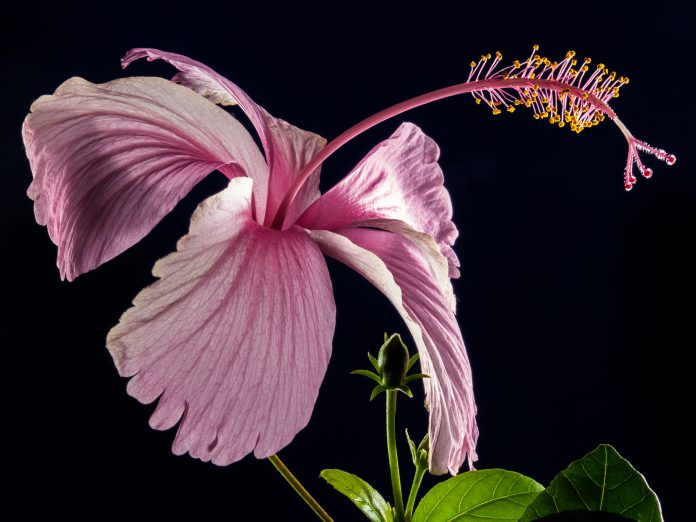
The marshmallow is not only a beautiful ornament for every garden, but since ancient times marshmallow has been one of the most highly valued medicinal plants. Its most important ingredient is mucilage, which occurs in large quantities. For this reason, marshmallow should not be boiled, but only used as a cold extract to preserve the powers of the mucilage.
The mucilage of marshmallow has a soothing effect on all mucous membranes, which is why it is mainly used for diseases of the respiratory and digestive system. Marshmallow can also have a soothing effect on skin problems when used as a compress or bath.
Plant description
The marshmallow is native to southern Europe, but in central Europe it is often cultivated in gardens. The perennial plant grows up to 2 metres high.
In spring, the root initially shoots roundish leaves near the ground. Only later does the stem grow between one and two metres high. The leaves that grow on the stems are three-lobed and have velvety hairs.
The flowers appear between June and the end of August and sprout in large numbers in the leaf axils. The five medium-sized petals are light pink. The united stamens and pistils are more intense in colour and approximately red-violet. The flowers develop into fruits, similar to the mallow, with which the marshmallow is related.
Characteristics
Scientific name
Althaea officinalis.
Plant family
Malvaceae.
Other names
Common marsh-mallow, Mallards, Cheeses, Mauls, Sweet weed, Schloss Teai, Mortification Koot, Mallow, White mallow, Mortification root, Wymote.
Used plant parts
Root, leaf & flower.
Ingredients
Mucilage, essential oil, saponins, asparagine, ephedrine, tannin, tannic acid, coumarins, zinc.
Harvest period – Root
September to November.
Medicinal properties
The most important characteristic of marshmallow is its richness in mucilage, especially in the root. Therefore it can be used wherever an enveloping, protective effect is desired. The marshmallow helps primarily against respiratory diseases, inflammation and irritation of the digestive organs.
Main uses: Respiratory system & Digestion.
Healing effects
- Cough
- Tracheitis
- Sore throats
- Hoarseness
- Colds
- Bronchitis
- Peptic ulcer
- Flatulence
- Diarrhea
- Constipation
- Oral mucosa infections
- Gastritis
- Intestinal mucosa inflammation
- Acid stomach
- Calming
- Hemostatic
- Anti-inflammatory
- Softening
- Diuretic
- Tonifying
- Bad breath
- Urethritis
- Bladder stones
- Epilepsy
- Wounds
- Minor burns
- Cracked skin
- Dry skin
- Wet eczema
- Insect bites
- Splinters
- Boils
- Contusions
- Sore muscles
Application methods
- Orally
- Topically
Forms of preparation
Tea
To ensure that the mucus of the marshmallow root is well preserved, marshmallow tea is prepared as a cold extract. To do this, pour a cup of cold water over 3 teaspoons of the cut marshmallow root and allow the mixture to steep for at least eight hours (overnight is possible). Then strain the tea and warm it slightly to drinking temperature. Tea from the flowers and leaves of the marshmallow is also prepared cold. However, only one or two teaspoons of these are needed per cup. Drink one to three cups of marshmallow tea per day.
Internal use
It can be used for rinsing and gargling against inflammation in the mouth.
External use
Marshmallow tea can also be used externally in the form of washes, baths or compresses. It helps against light burns, cracked skin and damp eczema. Boils and even carbuncles are softened by marshmallow-breium strokes. To do this, rub the roots finely and mix them with honey. This porridge is spread on a small cloth and placed on the area to be treated. Replace with a new compress every two to three hours.
Food
The marshmallow is also suitable for use in the kitchen. In the past, marshmallows were prepared from the stems, leaves and root. The cooked root is nutritious but bland. In times of need, the marshmallow root used to be boiled. Leaves and flowers can be used to make salad.
Collection tips
The root of the marshmallow is dug up in early spring or in autumn after the flowering period. The flowers are collected when they are freshly in bloom. Since the plants’ flowering period lasts for months, the flowers are collected one by one. The leaves are only collected after the flowering period, because only then the slime content in the leaves is highest.
English
Alternative forms
- marsh mallow, marsh-mallow
Etymology
From Old English mersċmealwe, corresponding to marsh + mallow.
Pronunciation
- (UK) IPA(key): /mɑːʃˈmæləʊ/
- (US) IPA(key): /ˈmɑɹʃˌmɛl.oʊ/, /ˈmɑɹʃˌmæl.oʊ/
- Rhymes: -æləʊ
Noun
marshmallow (plural marshmallows)
- A species of mallow, Althaea officinalis, that grows in marshy terrain. [from 9th c.]
- 1653, Nicholas Culpeper, The English Physician Enlarged, Folio Society 2007, page 180:
- 1653, Nicholas Culpeper, The English Physician Enlarged, Folio Society 2007, page 180:





